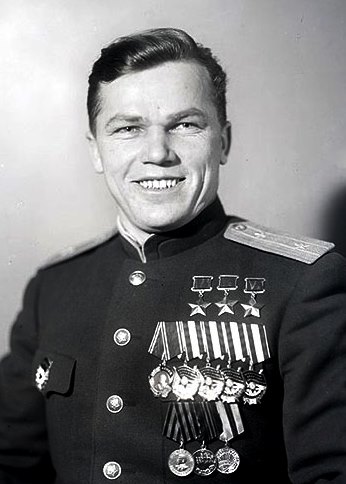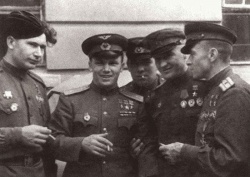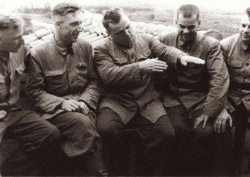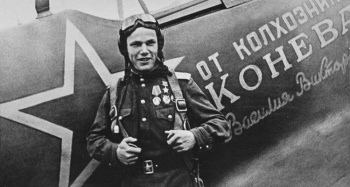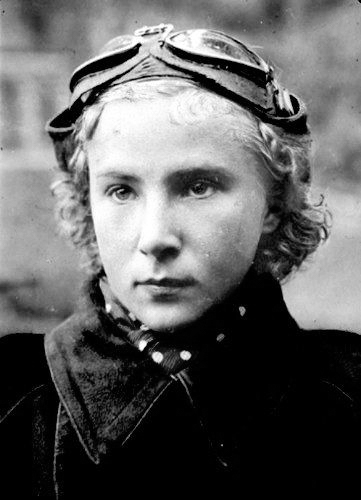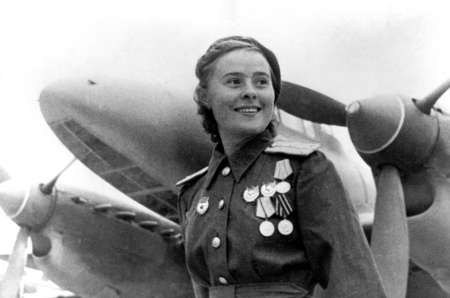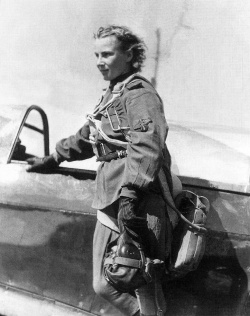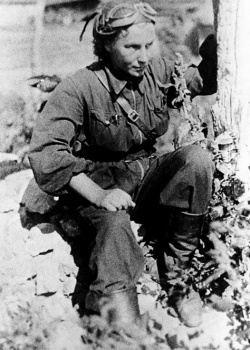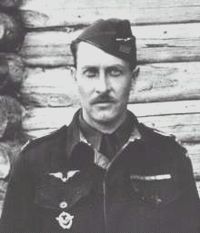Difference between revisions of "User:AN_TRN_26"
(Added wartime experience for Challe) |
(Edits.) |
||
| Line 267: | Line 267: | ||
==== General ==== | ==== General ==== | ||
| + | René Challe and several siblings learned to love flying and the military at an early age. Their father General Georges Challe was in charge of France's 4<sup>th</sup> Infantry division during World War I, where he would ultimately die in combat 1917. General Challe's younger brother Maurice Challe was a French aviation pioneer after receiving military flight certification in 1911 as the 46<sup>th</sup> French military aviator. Maurice died in combat in 1916 while performing missions over enemy territory. Patriotism and heroic stories of General Georges Challe and his brother Maurice inspired the Challe children to pursue careers in aviation and with the military.<ref name="Genealogy" /> | ||
| + | |||
| + | Before the start of World War II, René Challe attended military school at St. Cyr and at the Air School in Versailles, upon his 25<sup>th</sup> birthday Challe received his pilot credentials. Challe would then be assigned to the 3/7 hunting group in the French Air Force. At the beginning of World War II, Challe is promoted to Lieutenant and transferred to 5<sup>th</sup> group.<ref name="Genealogy" /> | ||
| + | |||
==== War Experience ==== | ==== War Experience ==== | ||
| − | Challe’s early venture into World War II began after Britain and France declared war on Germany. At the time, Challe had entered into the service of the French Air Force and was part of GC III/7. During the Battle of France, he was assigned to fly an M.S.406, a fighter of French design and build. The 406 | + | Challe’s early venture into World War II began after Britain and France declared war on Germany. At the time, Challe had entered into the service of the French Air Force and was part of GC III/7. During the Battle of France, he was assigned to fly an [[M.S.406C1|M.S.406]], a fighter of French design and build. The 406 was not a stellar aircraft, however, it did have a good climb rate and energy retention allowing for repeated dive and climb situations (Boom & Zoom). This aircraft carried two light-weight 7.5 mm machine guns and a single 20 mm Hispano cannon. As Challe found out, one weakness of the aircraft is its lack of armour. While credited with a potential kill shooting down a He 111, while chasing a Do 17 he was able to disable it causing it to crash, but not before the defensive gunners set his M.S.406 alight and Challe took a bullet to the chest, puncturing his right lung. Upon parachuting to the ground, according to one source, peasants mistook for a Luftwaffe pilot and attempted to kill him. Apparently, it took him slinging insults in French before they realised he was a French pilot evacuated him to Bar-le-Duc to recover in a hospital.<ref name="Donjon" /> |
| + | |||
| + | After his recovery, France fell to the Germans and while the military was demobilized, Challe was determined to continue the fight against Germany. In August 1943 in the company of eight other aviators, they attempted to escape through Spain only to be caught and imprisoned. At the end of 1943, they were released to French authorities in Casablanca where they immediately volunteered to serve in the Normandie-Niémen Hunting Regiment which was French pilots flying for the Soviet Union in Soviet-built fighters in the city of Tula. Challe and others began their training on Yak-9 fighter aircraft and he was later assigned to the Yak-9T known as “White 60”. In June 1944, Challe was credited with his first German fighter kill when he downed a Bf 109. In a flight of three Yaks, Challe and his wingmates spotted two Bf 109s, determining they were alone, he dove and came up under one of the 109s and within 100 meters of his target, he opens fire with his 37 mm cannon, shearing off the right wing of the 109, causing it to enter into a spin and crash into the ground. Challe’s wingmates took care of the remaining 109.<ref name="Donjon" /> | ||
| − | + | Later in October 1944, Challe and wingmates happened upon Fw 190 fighters around Eydukhnen, East Prussia. The French manned fighters each took a target and Challe continued to manoeuvre to remain behind the 190 in front of him. At one point the Luftwaffe pilot cut his throttle in an attempt to get Challe to blow past him, however manoeuvres to avoid the overshoot and is able to line up on a slow-moving Fw 190. Several cannon rounds were unloaded into the 190 apparently taking out the pilot as he failed to take evasive action and the disabled aircraft crashed into the ground without a parachute emerging during the descent.<ref name="Donjon" /> | |
| − | + | Challe’s final flight took place on 17 January 1945 when he and two other wingmates took to the skies (a fourth had engine trouble and returned to the airfield). Around 09:00, between Insterburg and Gumbinnen, enemy aircraft were reported, upon arriving in the area, Challe found that Fw 190’s were strafing ground targets with escort aircraft watching from above. Undaunted, Challe and his wingmates select targets and attack. Getting in close range, Challe opened fire and ignited on Fw 190, however, he quickly had to disengage to help his wingmate Marchi who had an enemy on his tail. After taking care of the tail, a third enemy passed by closely and after doing a quick look around, Challe determined it safe to pursue. Challe closed the distance, lined up his shot and immediately his aircraft was rocked by minengeschoß rounds which exploded in his cockpit, one exploding near his throttle quadrant, badly injuring his left hand and forearm. His wingmates were able to relay the location of the pursuing enemy aircraft and Challe was able to avoid further hits and dodged incoming shots with quick rudder adjustments. Out of ammunition, the enemy fighters disengage and Challe is able to limp back to base without the use of his right hand. After safely landing, the ground crew were surprised when Challe did not come bounding from his aircraft in typical fashion and after approaching, understood the severity of Challe’s wounds and aided him out of the aircraft and to the hospital. Soviet doctors wanted to perform an amputation due to the wounds, however, Challe put up a fight and persisted that his arm be saved. The doctors relented and did their best to repair the damage. Challe later recovered from the ordeal with the use of his arm, however, the war ended before he was able to fly again.<ref name="Donjon" /> | |
| − | |||
==== Preferred Tactics ==== | ==== Preferred Tactics ==== | ||
| + | The 37 mm NS-37 cannon of the Yak-9T was a fearsome weapon, however, due to its reload time and ammunition capacity, "spray and pray" firing tactics were not an option. As Challe demonstrated time and again, for him, the best bet was to manoeuvre his fighter as close to the enemy as possible, sometimes within 100 m and then engage with the cannon. At this range, the cannon had a better chance of hitting its target and as demonstrated by Challe, it could remove a wing or disable a pilot with ease. Challe would wait for the target aircraft to manoeuvre in a fashion which would expose enough surface area to reduce the chance of the 37 mm rounds bouncing or deflecting off of the target aircraft. | ||
| + | |||
==== Media ==== | ==== Media ==== | ||
<div><ul> | <div><ul> | ||
| Line 296: | Line 303: | ||
<ref name="Chen">Chen, C. P. (n.d.). Lydia Litvyak. Retrieved from https://ww2db.com/person_bio.php?person_id=433 </ref> | <ref name="Chen">Chen, C. P. (n.d.). Lydia Litvyak. Retrieved from https://ww2db.com/person_bio.php?person_id=433 </ref> | ||
<ref name="Simonovich">Simonovich, S. (2018). Pilot Profile: Lydia Litvyak, the World's First Female Fighter Ace. Retrieved from https://aviationoiloutlet.com/blog/lydia-litvyak-first-female-fighter-ace/ </ref> | <ref name="Simonovich">Simonovich, S. (2018). Pilot Profile: Lydia Litvyak, the World's First Female Fighter Ace. Retrieved from https://aviationoiloutlet.com/blog/lydia-litvyak-first-female-fighter-ace/ </ref> | ||
| + | <ref name="Donjon">Donjon, Y. (2007). René Challe. Retrieved from http://chezpeps.free.fr/bruno-challe/@/rene_challe.htm </ref> | ||
| + | <ref name="Genealogy">Généalogie de René CHALLE. (n.d.). Retrieved from https://gw.geneanet.org/garric?lang=fr&p=rene&n=challe </ref> | ||
</references> | </references> | ||
Revision as of 16:37, 17 June 2019
This page was the 2652nd page created in this wiki. There are currently 25,252 pages and growing. So far betweem 485,586 users (of which 236 are actively editing), 195,530 edits have been made, how many of them are yours?
| Wiki Moderator Since 2018 |
| This member plays War Thunder on Windows |
 |
This member considers Yak-2 KABB the best USSR aircraft in game. |
 |
This member considers XP-55 Ascender the best USA aircraft in game. |
 |
This member considers Fw 190 A-5 the best Germany aircraft in game. |
Contents
Aces of World War II
USA
Bong, Richard I.
Bostwick, George E.
Wetmore, Ray S.
Germany
Hartmann, Erich A.
Marseille, Hans-Joachim
USSR
Dolgushin, Sergei F.
Golovachev, Pavel Y.
Kozhedub, Ivan N.
- Top allied fighter ace, three times Hero of the Soviet Union
General
Kozhedub's first flying experience was as a teenager when he learned how to fly through the local Shostkinsk aeroclub where they flew Polikarpov U-2 (trainer versions of the PO-2) and UTI-16 (two-seat trainer version of the I-16).[1] The "U" in the aircraft name is the Russian uchebny which means "trainer." In 1940 he joined the Soviet military and graduated from Chuhuiv Military Air School in 1941 around the time the German's began their invasion of the Soviet Union. Eager to get to the front, Kozhedub was denied a transfer, instead, his superiors recognized his knowledge and expertise around the aircraft along with his ability to teach and retained him as a pilot instructor.[2] Ivan remained at the school for two more years instructing many pilots who would transfer to the front lines.[1][2] It was during the process of teaching the student pilots that Kozhedub refined his own abilities as a pilot. Finally, in 1943 Kozhedub after several denied requests to go to the front, was granted a transfer to the 240th IAP.
War Experience
Now on the front lines, Kozhedub was provided with one of the new Lavochkin La-5 fighters. In March 1943, Kozhedub flew on his first combat sortie and it would be one that he would not forget, as while focusing on one target, he developed tunnel vision and did not see two Bf 109s which descended upon him and riddled his aircraft with holes.[1] Able to get away, Kozhedub limped his aircraft back to base where it had to be scrapped after he landed. Lessons learned here taught him that you must always look around and keep an eye on the enemy at all times. Religated to older fighters, Kozhedub did not give up and began to increase his tally score of aerial victories as the months went on.[2] Kozhedub exercised confidence and technique and incorporated it with the experience he was gaining. Initially, he started out as part of a squadron, usually working in pairs when going after enemy aircraft, sometimes as bait and other times an attacker. Bomber escort duty was also necessary, but that didn't stop him from adding victory stars to his aircraft. Over time Kozhedub was provided with another new La-5 and several months later he was given an upgraded La-5F and then a La-5FN.[2]
In 1944 as Kozhedub was generating a significant tally of downed enemy aircraft, he was transitioned into the new La-7, which he determined to be the best fighter aircraft in the world and held that belief even after the war.[3] Aerial victory number 55 was especially memorable for Kozhedub, as while he and a partner were flying on patrol, they spotted an unusual aircraft which was travelling faster than what their La-7s could do. The aircraft turned out to be a German jet fighter, the Me 262 which could outrun them. Eager to attempt to shoot down the jet, Kozhedub's partner shot at the jet, spooking the pilot which caused him to turn to the left, right in front of Kozhedub. Losing enough speed in the turn, the jet was an easy target, one which Kozhedub unloaded on, knocking it out of the sky.[3][2] By the time the war had ended, Kozhedub had 64 confirmed aerial victories, however, it is estimated he had over 100, many of those others were shared kills in which he gave the full credit to the other pilot rather than take it for himself.[3]
Preferred Tactics
Kozhedub was a pilot of patience, waiting until almost on top of his target before letting loose his weapons. With nose-mounted cannons in La-5, La-5FN and La-7, setting gun convergence was not necessary, yet, Kozhedub typically waited until he was within 200 - 300 meters before firing and preferred unloading on an aircraft through deflection shooting or by aiming ahead of the target while it was climbing, diving or banking left or right. In an interview with Aviation History magazine, Kozhedub stated that while he respected the courage of German aces, he did not pay much attention to them, instead, he focused on "trying to guess as soon as possible the plans and methods of my enemy, and find weak spots in his tactics."[4]
|
I always felt respect for an enemy pilot whose plane I failed to down.
|
Describing attacking a target, Kozhedub stated, "I chose a victim and came in quite close to it. The main thing was to fire in time."[4] However, it was important to avoid tunnel vision when following a target hence why it was important to maintain caution as "caution is all-important and you have to turn your head 360-degrees all the time", a valuable lesson he learned in his first combat sortie in 1943. "The victory belonged to those who knew their planes and weapons inside out and had the initiative."[4]
Kozhedub spent the early years of the war from 1940 to 1942 as a pilot instructor. While learning to fly always takes time (Kozhedub was required 100 hours of flight time before he was first licensed at the aeroclub) and with the Great Patriotic war heating up, many new recruits were eager to get flying and mastering skills as quickly as possible and as often as eager students tend to do,"...young pilots often ask how they can learn to fly a fighter quickly; I came to the conclusion that the main thing is to master the technique of pilotage and firing. If a fighter pilot can control his plane automatically, he can correctly carry out a maneuver [sic], quickly approach an enemy, aim at his plane precisely and destroy him. It is also important to be resourceful in any situation."[4]
Keeping a cool head and knowing your surroundings were critical for setting up a battle to the attacker's advantage and here, "the main thing was to attack enemy planes during turns, ascents or descents, and not to lose precious seconds..."[4] because any second lost was an opportunity for the opponent to turn the tables and take any advantage away.
Media
Litvyak, Lydia V.
- First female fighter pilot to shoot down an enemy aircraft
- First female ace
General
Lydia Vladimirovna Litvyak, born in 1921 in Moscow and found an early love of aviation where she enrolled in a local flying club at the age of 14.[5][6] By age 15, Litvyak had performed her first solo flight.[7] By the time she was 18, Litvyak had become a flight instructor at the Kalinin Airclub and training 45 pilots by the time the German-Soviet war broke out in 1941.[8] By June 1941 Litvyak applied to join a military aviation unit, however, the recruiter noted that she did not have enough flight hours (1,000 total flight hours were needed) and rejected her application. Undeterred, Litvyak went to the next closest recruiting office and listed her pre-war flight time at over 1,000 hours, thus “meeting” the requirements, she was admitted into Soviet military aviation.[8][6]
After military basic training, Litvyak was assigned to Marina Raskova’s female air combat unit, Air Group 122, which included three regiments, the 586th Fighter Regiment, 687th Bomber regiment along with the famous 588th Night Bomber Regiment (the Night Witches).[7][5][6] Litvyak was assigned to the 586th Fighter regiment where she was selected to and trained on the single-seat Yakovlev Yak-1 fighter aircraft. At the time more advanced fighter aircraft such as the LaGG-3 was reserved for male pilots, whereas the female pilots were allotted the older Yak-1 aircraft.[5]
Litvyak was not a cookie-cutter military recruit and often found ways to express her individuality, including bleaching her hair with peroxide after being required to cut it short and adding a fur collar to her standard-issued military uniform. In spite of her rebelliousness, Raskova determined that Litvyak was a “brilliant pilot with instincts and gifts no training could provide.”[7]
War Experience
Lydia Litvyak’s first opportunity to fly combat patrols started in the summer of 1942 where she and others were assigned to fly defence missions over the city of Saratov, an important city and major port on the Volga River. After a successful assignment, Litvyak and other female pilots were transferred to a male flying regiment near Stalingrad (current-day Russian: Волгогра́д, English: Volgograd).[5] It was here on September 13, 1942, in which Litvyak was pitted in her first dogfight against Jagdgeschwader 53, one of Germany’s most lethal fighter units at the time.[6] It was during this event in which Litvyak shot down her first two enemy aircraft, a Ju 88 bomber and a Bf 109 G-2 piloted by German 11-kill ace Erwin Meier.[7] After Meier was allowed to meet the pilot who shot him down, he was shocked when it turned out to be Litvyak and refused to believe it was her until she explained in great detail the dogfight which lead to his being shot down.[5][8] Upon realizing the truth, he offered his gold watch to Litvyak as a sign of his respect where she stated:
|
"I don’t accept gifts from my enemies."
|
This began a series of successful missions in which she proved herself as a fighter pilot and earned the respect of the other pilots. Over the next few months, Litvyak racked up several more kills both as the sole attacker and shared attacks with fellow pilots of German Ju 88 bombers, Bf 109s and a Fw 190. Opportunities for combat lessened, mostly due to the senior leadership of Litvyak’s flying regiment and so she was transferred to the 9th Guard Fighter Regiment in early January 1943.[8] The men of this unit flew LaGG-3s and so the squadron did not have the facilities to repair the Yak-1 fighters. Coupled with this and the units upgrade to Bell P-39 Aerocobras, the female pilots with their Yaks were moved to the 73rd Guard Fighter Regiment which did have facilities to repair the Yaks.[7] It was here with the 73rd that Litvyak was promoted to Junior Lieutenant. Due to her fierceness in the air and her proven abilities, Litvyak was selected to participate in an experiment dubbed “Okhotniki” or “free-hunter”, an elite aerial fighting tactic which allowed specific pilots to fly in pairs, hunting the skies for enemy aircraft to seek and destroy at will and racked up a few more aerial victories.
In May of 1943, the German artillery was utilizing an observation balloon to report the location of Soviet soldiers, snipers and equipment to German artillery crews on the ground with great success. Attempts were made to destroy the balloon, however, all Soviet fighter attacks which attempted to attack the balloon were repulsed by heavy anti-aircraft fire.[5] Litvyak volunteered to attack the balloon but was turned down. For Litvyak, “no” meant looking for another way to get the job done. This time she approached her flight commander with a plan to fly a wide circle around the active battlefield and attack the balloon from the rear from over German-occupied territory. The plan was accepted and Litvyak took off. The plan worked flawlessly as she was able to come in from the rear of the balloon and get close enough to ignite the hydrogen-filled balloon with her tracer bullets, sending it to the ground in a crumpled heap.[7]
August 1943 proved to be Lydia Litvyak’s final flights where on her 4th sortie of the day on August 1st escorting IL-2 attackers, her flight was attacked by German Bf 109s. Focused on attacking a Ju 88 bomber, Litvyak did not see the two Bf 109s descend on her tail.[7] Another pilot from her flight, Ivan Borisenko recalled, “Lily just didn’t see the Messerschmitt 109s flying cover for the German Bombers. A pair of them dived on her and when she did see them she turned to meet them. Then they disappeared behind a cloud.” Borisenko last saw Litvyak’s Yak through a gap in the clouds which at that time was pouring out smoke and at that point being pursued by as many as eight Bf 109s. When an opportunity presented itself, Borisenko descended below the clouds but did not see her, a parachute or results of an explosion, however, she never returned from that mission.[8][6]
Litvyak was listed as missing in action, however, the full truth is not known. There are accounts of a Yak-1 discovered near the battlefield with a female who had a fatal head wound and was buried in a village nearby, however, there are also accounts of a female pilot parachuting to safety and then captured by German forces. Also listed is an account of fellow POWs recognizing her in a POW camp. Stalin was known to state any Russians taken as POW were considered to be traitors, so it is possible if she was captured, she may have avoided returning to a hostile Soviet Union. To this day there are many speculations as to the end of Lydia Litvyak, but no definite proof.
- Aircraft flown
- Yak-1 - ‘’White 02’’
- Yak-1 - ‘’Red 32’’
- Yak-1 - ‘’Yellow 44’’
- Yak-1 - ‘’White 23’’
- Yak-1b – unknown
Preferred Tactics
Lydia Litvyak, was a fearless pilot who took to the skies in her Yak-1 fighter, an underdog when compared to the German Bf 109s both in firepower and overall aircraft characteristics, never-the-less, Litvyak outperformed even some of Germany’s best.[9] One tactic Litvyak utilised was to attack the bombers, in doing so, this would bring in the escorting Bf 109s which she would then work into a dogfight. Not all fights went in her favour as she brought back to base several heavily beat-up aircraft including one which she had to belly-land. Even when wounded, she opted to get back into a fighter and return to the melee. Litvyak also found success when hunting with a partner and teaming up on enemy aircraft brought down a number of them.[7] It was a combination of instinct and brute force which kept Litvyak fighting even when at against all odds until the end.
Media
Pokryshkin, Alexander I.
Zhukovsky, Sergey Y.
Great Britain
Plagis, Ioannis "John"
Japan
岩本 徹三 Iwamoto Tetsuzō
坂井 三郎 Sakai Saburō
Italy
Marcolin, Luciano
France
Challe, René M.P.A
- Fought with famed Normandie-Niémen Hunting Regiment out of Tula, USSR
General
René Challe and several siblings learned to love flying and the military at an early age. Their father General Georges Challe was in charge of France's 4th Infantry division during World War I, where he would ultimately die in combat 1917. General Challe's younger brother Maurice Challe was a French aviation pioneer after receiving military flight certification in 1911 as the 46th French military aviator. Maurice died in combat in 1916 while performing missions over enemy territory. Patriotism and heroic stories of General Georges Challe and his brother Maurice inspired the Challe children to pursue careers in aviation and with the military.[10]
Before the start of World War II, René Challe attended military school at St. Cyr and at the Air School in Versailles, upon his 25th birthday Challe received his pilot credentials. Challe would then be assigned to the 3/7 hunting group in the French Air Force. At the beginning of World War II, Challe is promoted to Lieutenant and transferred to 5th group.[10]
War Experience
Challe’s early venture into World War II began after Britain and France declared war on Germany. At the time, Challe had entered into the service of the French Air Force and was part of GC III/7. During the Battle of France, he was assigned to fly an M.S.406, a fighter of French design and build. The 406 was not a stellar aircraft, however, it did have a good climb rate and energy retention allowing for repeated dive and climb situations (Boom & Zoom). This aircraft carried two light-weight 7.5 mm machine guns and a single 20 mm Hispano cannon. As Challe found out, one weakness of the aircraft is its lack of armour. While credited with a potential kill shooting down a He 111, while chasing a Do 17 he was able to disable it causing it to crash, but not before the defensive gunners set his M.S.406 alight and Challe took a bullet to the chest, puncturing his right lung. Upon parachuting to the ground, according to one source, peasants mistook for a Luftwaffe pilot and attempted to kill him. Apparently, it took him slinging insults in French before they realised he was a French pilot evacuated him to Bar-le-Duc to recover in a hospital.[11]
After his recovery, France fell to the Germans and while the military was demobilized, Challe was determined to continue the fight against Germany. In August 1943 in the company of eight other aviators, they attempted to escape through Spain only to be caught and imprisoned. At the end of 1943, they were released to French authorities in Casablanca where they immediately volunteered to serve in the Normandie-Niémen Hunting Regiment which was French pilots flying for the Soviet Union in Soviet-built fighters in the city of Tula. Challe and others began their training on Yak-9 fighter aircraft and he was later assigned to the Yak-9T known as “White 60”. In June 1944, Challe was credited with his first German fighter kill when he downed a Bf 109. In a flight of three Yaks, Challe and his wingmates spotted two Bf 109s, determining they were alone, he dove and came up under one of the 109s and within 100 meters of his target, he opens fire with his 37 mm cannon, shearing off the right wing of the 109, causing it to enter into a spin and crash into the ground. Challe’s wingmates took care of the remaining 109.[11]
Later in October 1944, Challe and wingmates happened upon Fw 190 fighters around Eydukhnen, East Prussia. The French manned fighters each took a target and Challe continued to manoeuvre to remain behind the 190 in front of him. At one point the Luftwaffe pilot cut his throttle in an attempt to get Challe to blow past him, however manoeuvres to avoid the overshoot and is able to line up on a slow-moving Fw 190. Several cannon rounds were unloaded into the 190 apparently taking out the pilot as he failed to take evasive action and the disabled aircraft crashed into the ground without a parachute emerging during the descent.[11]
Challe’s final flight took place on 17 January 1945 when he and two other wingmates took to the skies (a fourth had engine trouble and returned to the airfield). Around 09:00, between Insterburg and Gumbinnen, enemy aircraft were reported, upon arriving in the area, Challe found that Fw 190’s were strafing ground targets with escort aircraft watching from above. Undaunted, Challe and his wingmates select targets and attack. Getting in close range, Challe opened fire and ignited on Fw 190, however, he quickly had to disengage to help his wingmate Marchi who had an enemy on his tail. After taking care of the tail, a third enemy passed by closely and after doing a quick look around, Challe determined it safe to pursue. Challe closed the distance, lined up his shot and immediately his aircraft was rocked by minengeschoß rounds which exploded in his cockpit, one exploding near his throttle quadrant, badly injuring his left hand and forearm. His wingmates were able to relay the location of the pursuing enemy aircraft and Challe was able to avoid further hits and dodged incoming shots with quick rudder adjustments. Out of ammunition, the enemy fighters disengage and Challe is able to limp back to base without the use of his right hand. After safely landing, the ground crew were surprised when Challe did not come bounding from his aircraft in typical fashion and after approaching, understood the severity of Challe’s wounds and aided him out of the aircraft and to the hospital. Soviet doctors wanted to perform an amputation due to the wounds, however, Challe put up a fight and persisted that his arm be saved. The doctors relented and did their best to repair the damage. Challe later recovered from the ordeal with the use of his arm, however, the war ended before he was able to fly again.[11]
Preferred Tactics
The 37 mm NS-37 cannon of the Yak-9T was a fearsome weapon, however, due to its reload time and ammunition capacity, "spray and pray" firing tactics were not an option. As Challe demonstrated time and again, for him, the best bet was to manoeuvre his fighter as close to the enemy as possible, sometimes within 100 m and then engage with the cannon. At this range, the cannon had a better chance of hitting its target and as demonstrated by Challe, it could remove a wing or disable a pilot with ease. Challe would wait for the target aircraft to manoeuvre in a fashion which would expose enough surface area to reduce the chance of the 37 mm rounds bouncing or deflecting off of the target aircraft.
Media
-
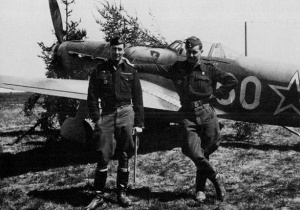 Rene and Maurice Challe in front of White 60, a Yak 9T-37. The Challe Brothers had joined the Normandie-Niemen Regiment on 18 March 1944.
Rene and Maurice Challe in front of White 60, a Yak 9T-37. The Challe Brothers had joined the Normandie-Niemen Regiment on 18 March 1944. -
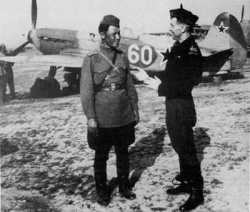 Rene Challe shares a joke with Kazanov, his Russian Mechanic. In the background is White 60, Challe's personal aircraft carrying the emblem of the French GC HI/7 Fighter Group.
Rene Challe shares a joke with Kazanov, his Russian Mechanic. In the background is White 60, Challe's personal aircraft carrying the emblem of the French GC HI/7 Fighter Group.
Other Nations
Reference
- ↑ 1.0 1.1 1.2 Лицар неба Іван Кожедуб. [Knight of the skies Ivan Kozhedub] (2010.). Retrieved from https://poltava.to/news/3210/
- ↑ 2.0 2.1 2.2 2.3 2.4 Prominent Russians: Ivan Kozhedub. (n.d.). Retrieved from https://russiapedia.rt.com/prominent-russians/military/ivan-kozhedub/
- ↑ 3.0 3.1 3.2 Bourne, Merfyn (2013). The Second World War in the Air: The story of air combat in every theatre of World War Two. Troubador Publishing Limited. 978-1-78088-677-0. p.263.
- ↑ 4.0 4.1 4.2 4.3 4.4 Guttmann, J. (2000, September). Interview with Ivan Kozhedub. Aviation History.
- ↑ 5.0 5.1 5.2 5.3 5.4 5.5 White, E. (2017, October 06). The Short, Daring Life of Lilya Litvyak. Retrieved from https://www.theparisreview.org/blog/2017/10/06/short-daring-life-lilya-litvyak-white-rose-stalingrad/
- ↑ 6.0 6.1 6.2 6.3 6.4 Simonovich, S. (2018). Pilot Profile: Lydia Litvyak, the World's First Female Fighter Ace. Retrieved from https://aviationoiloutlet.com/blog/lydia-litvyak-first-female-fighter-ace/
- ↑ 7.0 7.1 7.2 7.3 7.4 7.5 7.6 7.7 Courtney, C. (2018, October 06). The First Female Flying Ace: Lydia Litvyak. Retrieved from https://disciplesofflight.com/first-female-ace-lydia-litvyak/
- ↑ 8.0 8.1 8.2 8.3 8.4 Chen, C. P. (n.d.). Lydia Litvyak. Retrieved from https://ww2db.com/person_bio.php?person_id=433
- ↑ Thompson, B. (2012). Retrieved from http://www.badassoftheweek.com/litvyak.html
- ↑ 10.0 10.1 Généalogie de René CHALLE. (n.d.). Retrieved from https://gw.geneanet.org/garric?lang=fr&p=rene&n=challe
- ↑ 11.0 11.1 11.2 11.3 Donjon, Y. (2007). René Challe. Retrieved from http://chezpeps.free.fr/bruno-challe/@/rene_challe.htm


